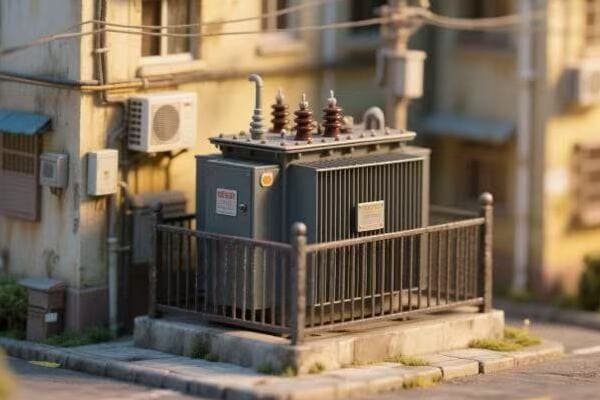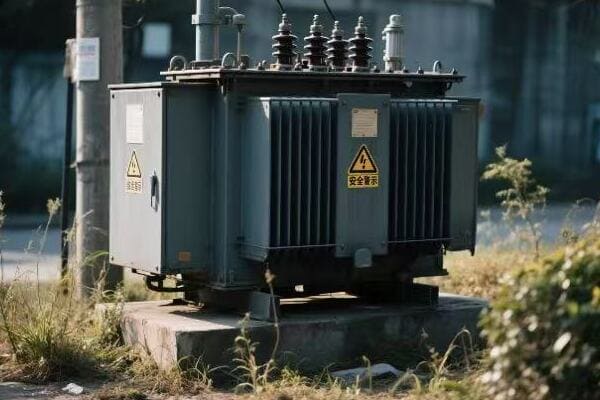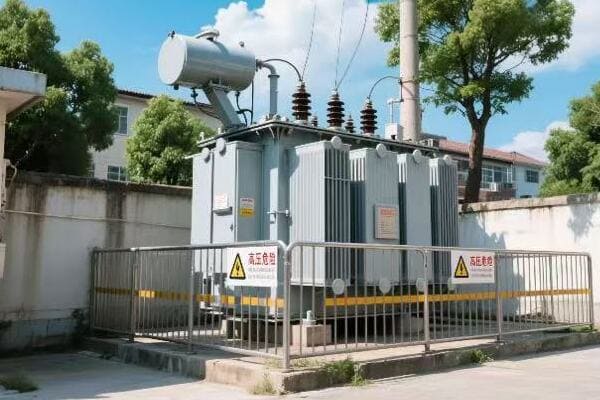Why Are Electric Transformers Crucial for Efficient Energy Distribution?
Have you ever wondered how electricity travels miles to power your home? The secret lies in a device you’ve probably seen but never thought much about: the electric transformer.
Electric transformers are crucial for efficient energy distribution because they enable voltage changes, allowing power to be transmitted over long distances with minimal losses. They also facilitate the step-down of voltage for safe use in homes and businesses, playing a vital role in the entire power distribution chain.

I’ve spent years working with transformers, and I’ve seen firsthand how they shape our energy landscape. Let’s dive into why these devices are so important and how they’re evolving to meet our growing energy needs.
Voltage Optimization: How Transformers Enable Efficient Long-Distance Power Transmission?
Ever noticed those huge towers carrying power lines across vast distances? Transformers make that possible, but how?
Transformers enable efficient long-distance power transmission by stepping up voltage at the source and stepping it down at the destination. This high-voltage transmission significantly reduces power losses over long distances, making it economically viable to transmit electricity across hundreds of miles.

In my career, I’ve worked on projects involving long-distance power transmission. Here’s how transformers make it happen:
Step-Up Transformation
At the power plant:
- Voltage Increase: Transformers raise voltage from generators (typically 20 kV) to transmission levels (up to 765 kV).
- Current Reduction: Higher voltage means lower current for the same power, reducing losses.
- Efficiency Gain: This process can make transmission 100 times more efficient.
I once worked on upgrading a power plant’s step-up transformer. We increased the transmission voltage from 230 kV to 500 kV, which allowed the plant to supply power to cities 300 miles away with minimal losses.
Transmission Line Efficiency
How high voltage helps:
| Voltage Level | Typical Distance | Loss Reduction |
|---|---|---|
| 765 kV | 300-500 miles | Up to 80% less than lower voltages |
| 500 kV | 200-300 miles | Significant for long-distance |
| 230 kV | 50-150 miles | Efficient for shorter distances |
In a recent project, we used 765 kV transmission to connect a remote wind farm to the grid. The high voltage made it economically viable to harness wind energy from a location that was previously considered too distant.
Step-Down Transformation
Bringing power to communities:
- Substation Transformers: Reduce voltage from transmission to distribution levels (typically to 69 kV or 34.5 kV).
- Distribution Transformers: Further step down voltage for end-user consumption (to 120/240 V for homes).
- Load Tap Changers: Adjust voltage slightly to maintain consistent supply despite load variations.
I’ve designed substation layouts where we used a series of transformers to gradually step down voltage. This staged approach helps maintain efficiency and reliability throughout the distribution process.
Voltage Regulation
Maintaining stable power supply:
- On-Load Tap Changers: Adjust transformer ratios without interrupting power flow.
- Static VAR Compensators: Work with transformers to manage reactive power and voltage levels.
- Autotransformers: Provide efficient voltage adjustment between transmission lines.
In a smart grid project, we implemented advanced voltage regulation using transformers with on-load tap changers. This system could respond to voltage fluctuations in real-time, ensuring stable power quality across the network.
Minimizing Energy Losses: The Role of Transformers in Reducing Power Wastage?
Did you know that older power systems could lose up to 20% of energy in transmission and distribution? Modern transformers are changing this story.
Transformers play a crucial role in reducing power wastage by minimizing both core losses and winding losses. Advanced materials, innovative designs, and efficient cooling systems in modern transformers significantly reduce energy losses, improving overall grid efficiency and reducing operational costs.

Throughout my career, I’ve seen transformer technology evolve to tackle energy losses. Here’s how they’re making a difference:
Core Loss Reduction
Tackling no-load losses:
- Amorphous Metal Cores: Reduce hysteresis losses by up to 70% compared to traditional silicon steel.
- Grain-Oriented Electrical Steel: Aligns grain structure to minimize magnetization energy.
- Laser Etching: Creates stress points in the core material to reduce eddy currents.
I once worked on replacing old transformers in a substation with new amorphous core units. The reduction in core losses was so significant that it paid for the upgrade in energy savings within five years.
Winding Loss Minimization
Addressing load losses:
| Technique | Benefit |
|---|---|
| Copper Windings | Lower resistance than aluminum |
| Larger Conductor Cross-Sections | Reduces current density and heating |
| Transposed Conductors | Minimizes circulating currents in parallel windings |
In a recent industrial project, we used transformers with advanced winding designs. The reduction in load losses not only improved efficiency but also reduced the cooling requirements, leading to lower operational costs.
Efficient Cooling Systems
Managing heat for better performance:
- Ester-Based Cooling Fluids: Better heat dissipation and environmental friendliness.
- Directed Oil Flow Designs: More effective cooling of windings.
- Forced-Air and Forced-Oil Cooling: Used in larger transformers for enhanced heat removal.
I was involved in retrofitting a large power transformer with a new cooling system. The improved heat management allowed the transformer to handle higher loads more efficiently, effectively increasing its capacity without replacement.
Smart Monitoring and Control
Optimizing performance in real-time:
- Online Dissolved Gas Analysis: Detects potential issues early, preventing failures and associated losses.
- Temperature Monitoring: Allows for optimal loading and cooling system operation.
- Load Tap Changer Monitoring: Ensures efficient voltage regulation.
In a smart grid implementation, we installed transformers with advanced monitoring systems. The real-time data allowed for predictive maintenance and optimal loading, further reducing losses across the network.
Technological Advancements: Modern Transformer Designs for Enhanced Grid Efficiency?
Ever wondered how our aging power grid keeps up with growing energy demands? The answer lies in cutting-edge transformer technology.
Modern transformer designs enhance grid efficiency through advanced materials, smart technologies, and innovative construction techniques. These advancements result in transformers that are more efficient, reliable, and adaptable to the changing needs of our power systems, including the integration of renewable energy sources.

I’ve been fortunate to work with some of the most advanced transformer designs. Here’s what’s making a difference:
High-Temperature Superconducting Transformers
The future of efficiency:
- Near-Zero Resistance: Dramatically reduces load losses.
- Smaller Footprint: More power in less space.
- Fault Current Limiting: Inherent ability to limit short-circuit currents.
While still in early stages, I’ve been involved in pilot projects testing HTS transformers. The potential for efficiency gains is enormous, especially for high-power applications in urban areas.
Solid-State Transformers
Bridging power electronics and transformers:
| Feature | Benefit |
|---|---|
| Power Flow Control | Precise management of active and reactive power |
| Harmonic Mitigation | Built-in ability to clean up power quality |
| DC Capability | Easier integration of renewable and storage systems |
I recently consulted on a microgrid project using solid-state transformers. Their ability to handle both AC and DC power made integrating solar panels and battery storage seamless.
Nanotechnology in Transformer Design
Improving materials at the molecular level:
- Nanocomposite Core Materials: Further reduction in core losses.
- Nano-fluid Coolants: Enhanced heat transfer properties.
- Nanocoated Conductors: Improved current carrying capacity.
In a research collaboration, we tested transformers with nanocomposite cores. The reduction in core losses was impressive, pushing the boundaries of what we thought possible in transformer efficiency.
Digital Twin Technology
Virtual modeling for real-world optimization:
- Real-time Simulation: Predicts performance under various conditions.
- Predictive Maintenance: Identifies potential issues before they cause failures.
- Design Optimization: Allows for rapid prototyping and testing of new designs.
I’ve used digital twin technology to optimize transformer designs for specific grid conditions. This approach has led to transformers that are not just efficient in general, but perfectly suited to their intended application.
Load Balancing and Flexibility: Transformers as Key Players in Dynamic Energy Distribution?
Have you noticed how our power needs change throughout the day? Modern transformers are the unsung heroes keeping up with these fluctuations.
Transformers play a key role in dynamic energy distribution by enabling load balancing and providing flexibility in power flow. Advanced transformer designs with on-load tap changers, phase shifting capabilities, and smart monitoring systems allow for real-time adjustments to meet changing energy demands efficiently.

Throughout my career, I’ve seen transformers evolve to meet the challenges of dynamic energy distribution. Here’s how they’re making a difference:
On-Load Tap Changers (OLTC)
Adjusting voltage in real-time:
- Continuous Voltage Regulation: Maintains stable voltage despite load changes.
- Remote Control Capability: Allows for centralized grid management.
- Fast Response Time: Some modern OLTCs can change taps in cycles, not seconds.
I once worked on upgrading a substation with advanced OLTCs. The improvement in voltage stability was remarkable, especially during peak demand hours when load fluctuations were most severe.
Phase Shifting Transformers
Controlling power flow:
| Function | Benefit |
|---|---|
| Power Flow Control | Directs power where it’s needed most |
| Congestion Management | Alleviates overloading on specific lines |
| Loop Flow Mitigation | Optimizes power transfer in meshed networks |
In a recent project involving cross-border power exchange, we used phase shifting transformers to manage power flows between different grid operators. This allowed for more efficient use of transmission capacity and improved overall system stability.
Flexible Alternating Current Transmission Systems (FACTS)
Enhancing grid control:
- Static VAR Compensators: Work with transformers to manage reactive power.
- Thyristor Controlled Series Compensators: Adjust line impedance for optimal power flow.
- Unified Power Flow Controllers: Provide comprehensive power flow management.
I was involved in a grid modernization project where we integrated FACTS devices with existing transformers. The combination dramatically improved the grid’s ability to handle variable loads from renewable sources.
Smart Transformer Management Systems
Intelligent control for dynamic distribution:
- Real-time Load Monitoring: Allows for predictive load management.
- Automatic Tap Changing: Responds to load changes without human intervention.
- Coordinated Control: Optimizes performance across multiple transformers.
In a smart city project, we implemented a network of intelligent transformers. Their ability to communicate and coordinate load balancing resulted in a 15% improvement in overall distribution efficiency.
Smart Energy Management: The Integration of Intelligent Transformers in Optimizing Power Flow?
Ever wondered how our power grid is getting smarter? Intelligent transformers are at the heart of this revolution.
Intelligent transformers are revolutionizing power flow optimization through advanced sensors, real-time data analytics, and automated decision-making capabilities. These smart devices enable more efficient energy distribution, predictive maintenance, and seamless integration of renewable energy sources, contributing to a more reliable and sustainable power grid.

I’ve been fortunate to work on several smart grid projects involving intelligent transformers. Here’s how they’re changing the game:
Advanced Sensing and Monitoring
The eyes and ears of the smart grid:
- Dissolved Gas Analysis (DGA) Sensors: Detect potential issues before they become failures.
- Temperature Monitoring: Tracks hot spots and overall thermal performance.
- Partial Discharge Detection: Identifies insulation weaknesses early.
In a recent substation upgrade, we installed transformers with integrated DGA sensors. Within the first month, they detected a developing fault that would have led to a major outage if left unchecked.
Real-Time Data Analytics
Turning data into actionable insights:
| Analytics Type | Benefit |
|---|---|
| Load Forecasting | Optimizes transformer loading for efficiency |
| Fault Prediction | Enhances reliability through predictive maintenance |
| Power Quality Analysis | Ensures clean power delivery to sensitive loads |
I worked on implementing a data analytics platform for a fleet of distribution transformers. The system’s ability to predict load patterns allowed for proactive load balancing, reducing overloads and extending transformer life.
Automated Decision Making
Transformers that think for themselves:
- Adaptive Voltage Control: Automatically adjusts voltage based on real-time conditions.
- Self-Healing Capabilities: Isolates faults and reconfigures power flow.
- Dynamic Rating: Adjusts capacity based on environmental and load conditions.
In a smart city project, we deployed transformers with automated decision-making capabilities. During a heatwave, these transformers automatically adjusted their ratings and cooling systems, preventing overloads that would have occurred with traditional fixed-rating transformers.
Integration with Renewable Energy Sources
Adapting to the green energy revolution:
- Bi-Directional Power Flow Management: Handles input from distributed generation sources.
- Voltage Ride-Through Capabilities: Maintains stability during renewable energy fluctuations.
- Energy Storage Integration: Works with battery systems for load leveling.
I recently consulted on a microgrid project where intelligent transformers played a crucial role in integrating rooftop solar and community battery storage. The transformers’ ability to manage bi-directional power flow and rapidly changing loads was key to the project’s success.
Conclusion
Electric transformers are crucial for efficient energy distribution, enabling voltage optimization, minimizing losses, and facilitating smart grid technologies. Their evolving designs and capabilities are essential for meeting the challenges of modern power systems.
Free CHBEB Transformer Catalog Download
Get the full range of CHBEB transformers in one catalog.
Includes oil-immersed, dry-type, pad-mounted, and custom solutions.
Quick Message
Request A free quote
We'd like to work with you
- +86 15558785111
- [email protected]
- +86 15558785111
What We Do
CHINA BEI ER BIAN (CHBEB) GROUP, with 218 million in registered capital, originated from Beijing Beierbian Transformer Group. Headquartered in Beijing for R&D, it operates major production bases in Nanjing and Yueqing, producing high-quality products.
Latest Product
address
BeiJing
No 3,RongJing East Road,BeiJing Economic Technological Development Area,BeiJing,China
JiangSu
No 7️Xiangfeng Road,Jiangning,NanJing,JiangSu,China
WenZhou
No.211, Wei 16 Road, Industrial Zone, Yueqing, Wenzhou, Zhejiang, China.
XiangYang Industrial Zone ,YueQing,WenZhou,ZheJiang,China
contact us
- [email protected]
- +86 13057780111
- +86 13057780111
- +86 15558785111
Copyright © Bei Er Bian Group


